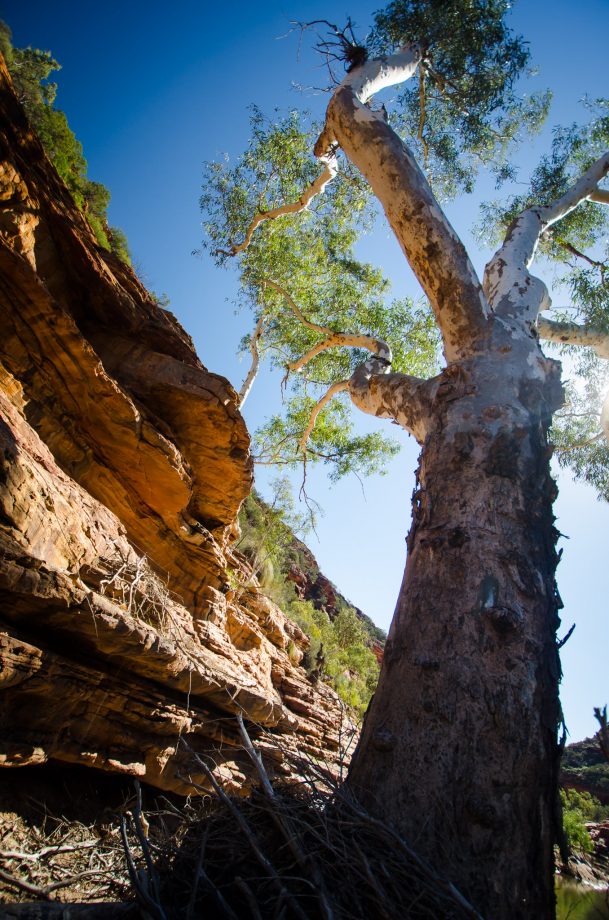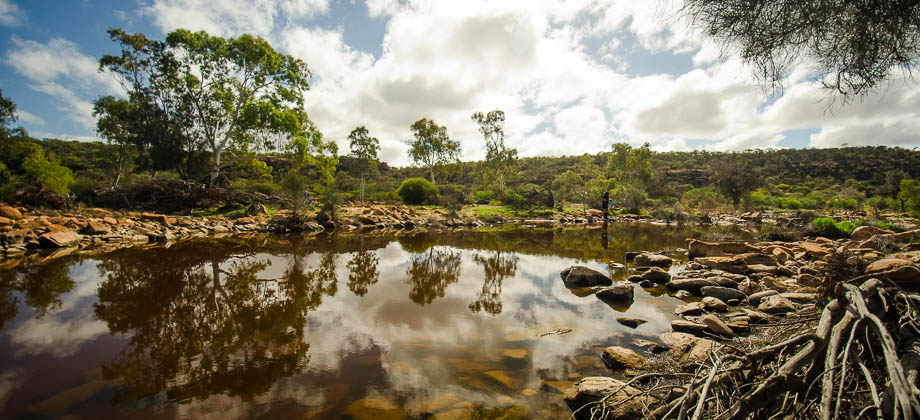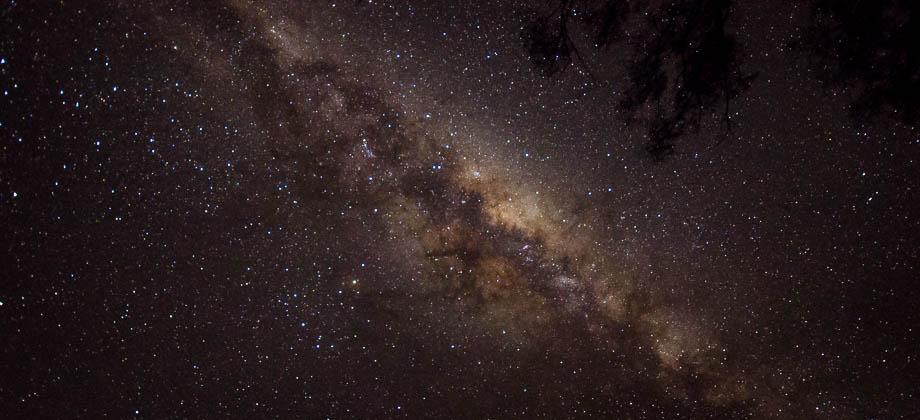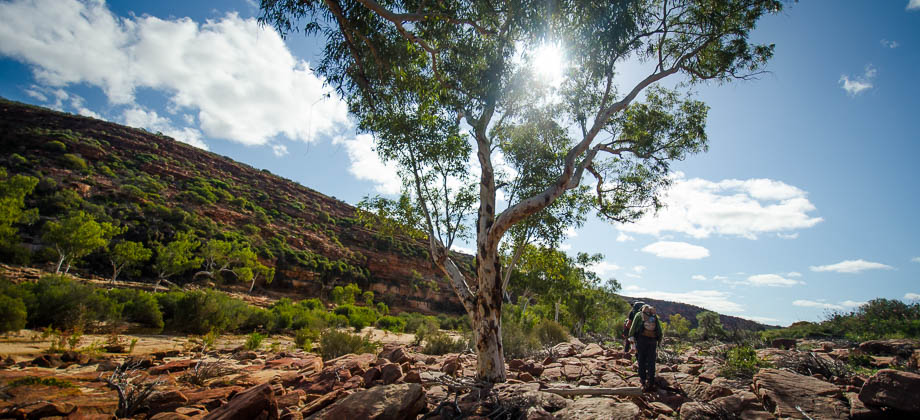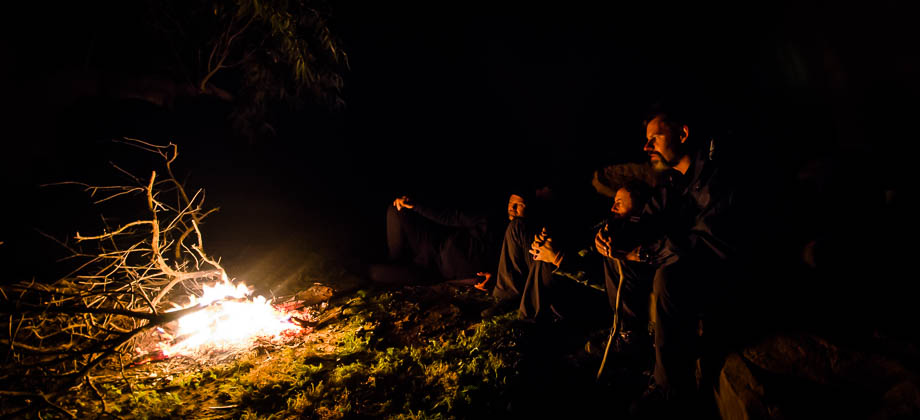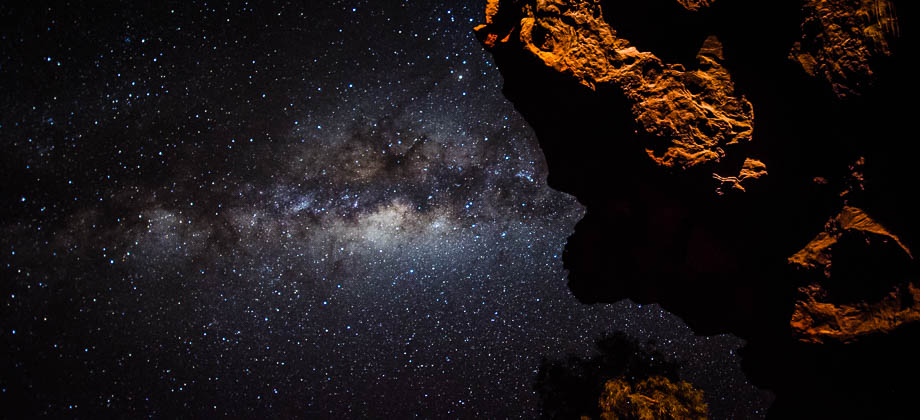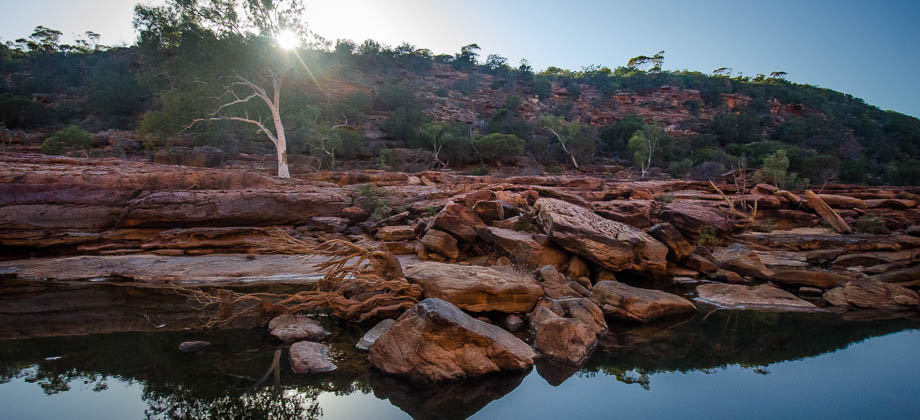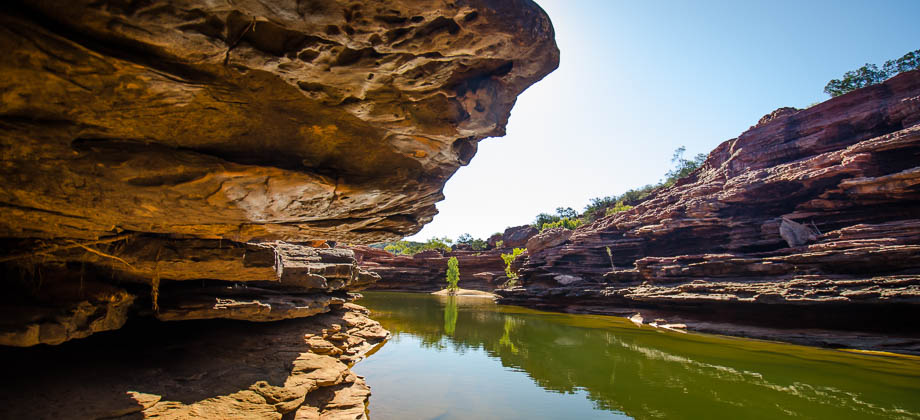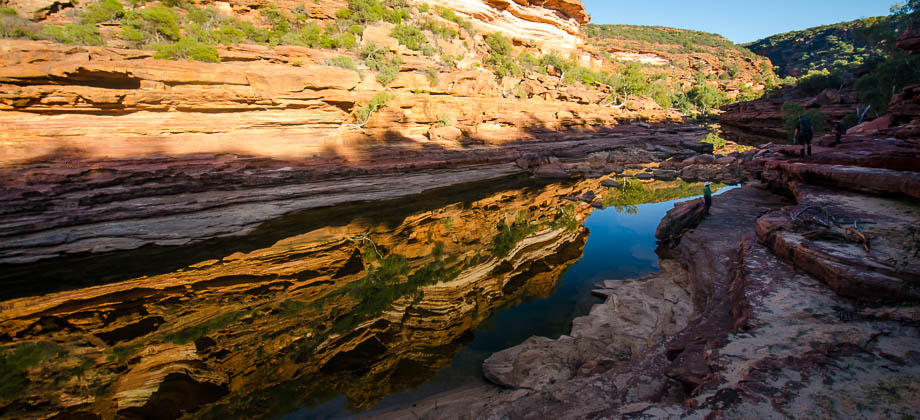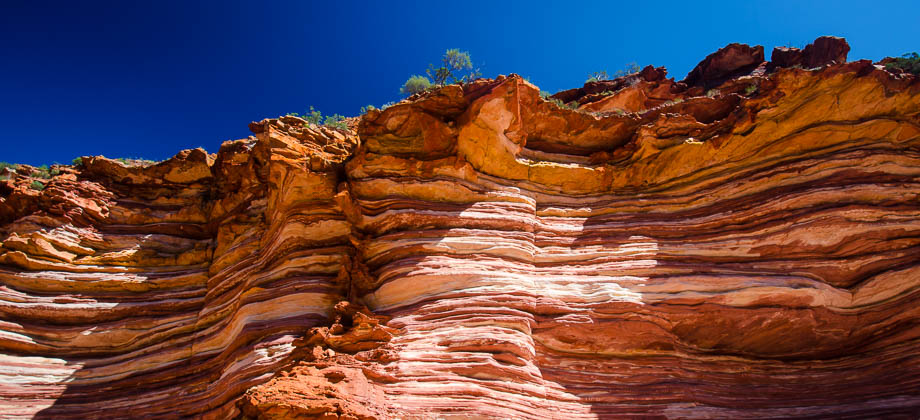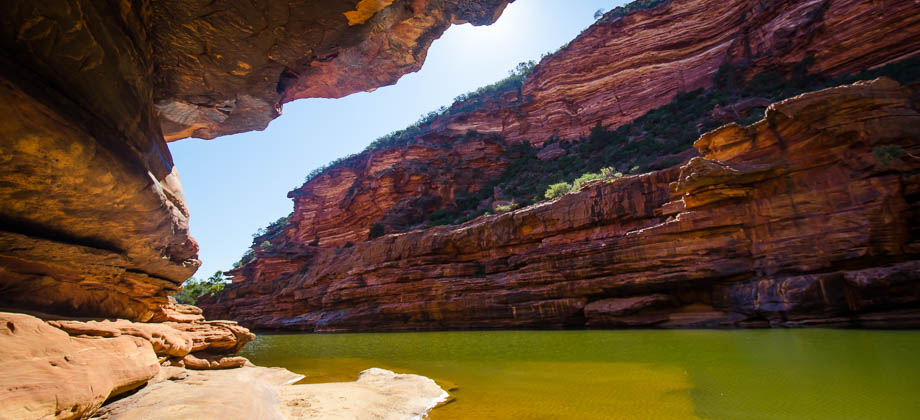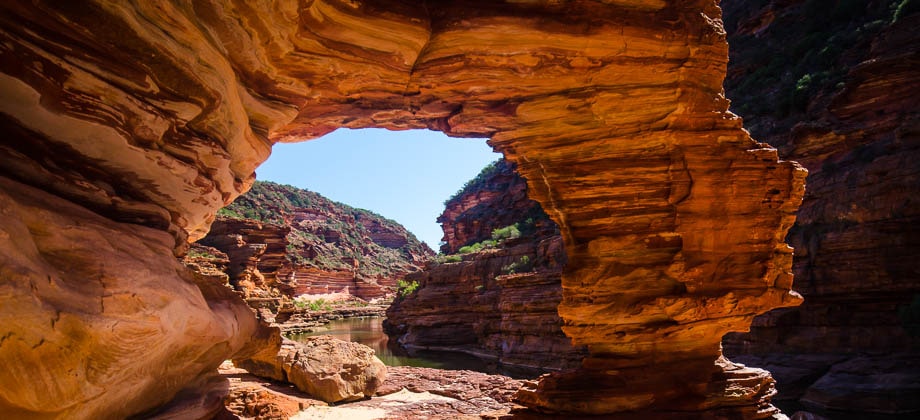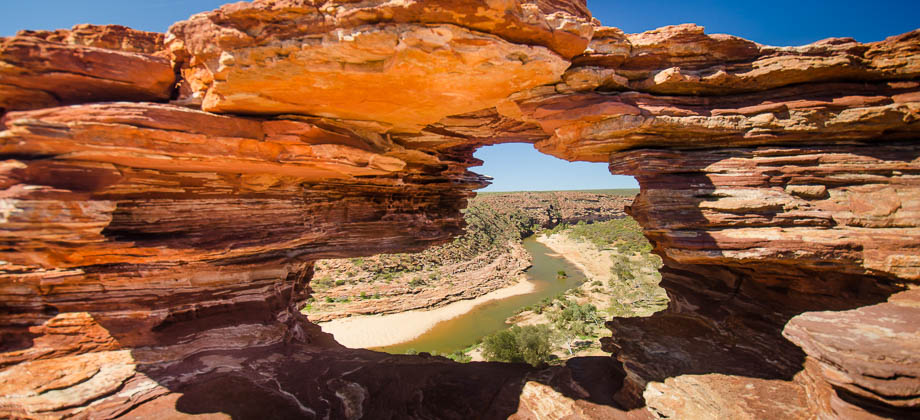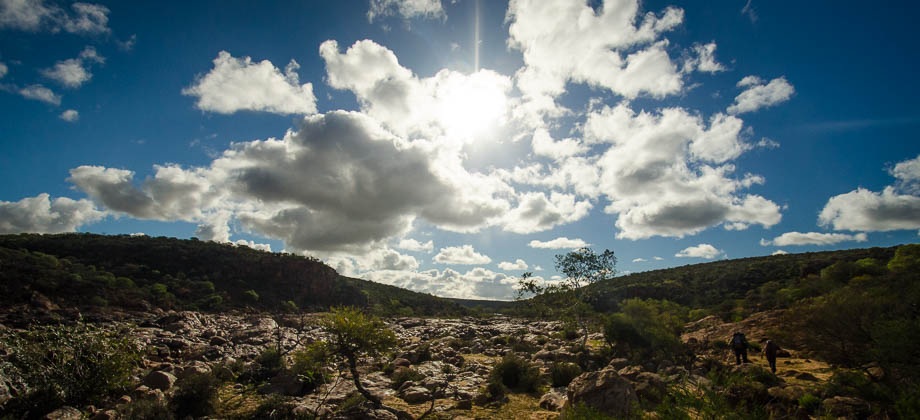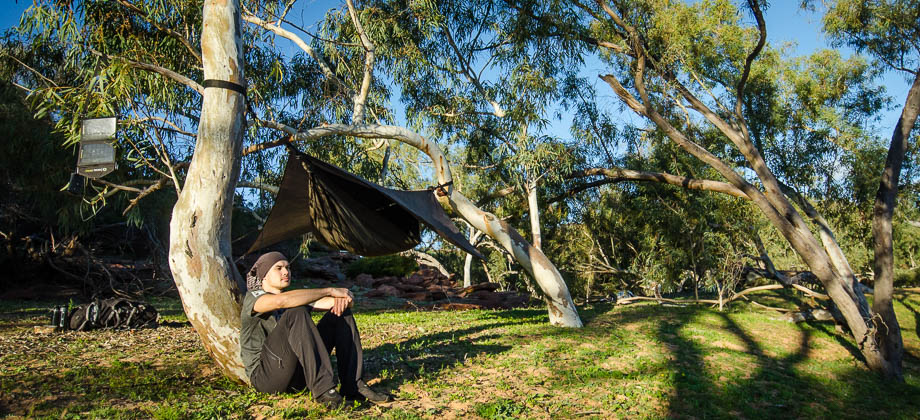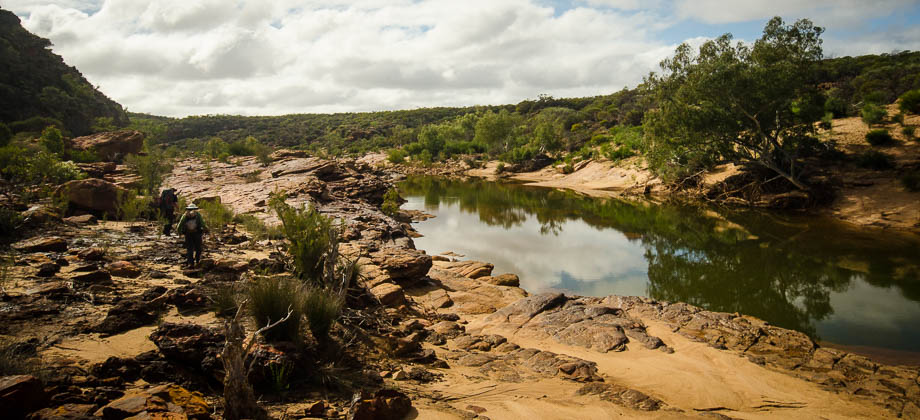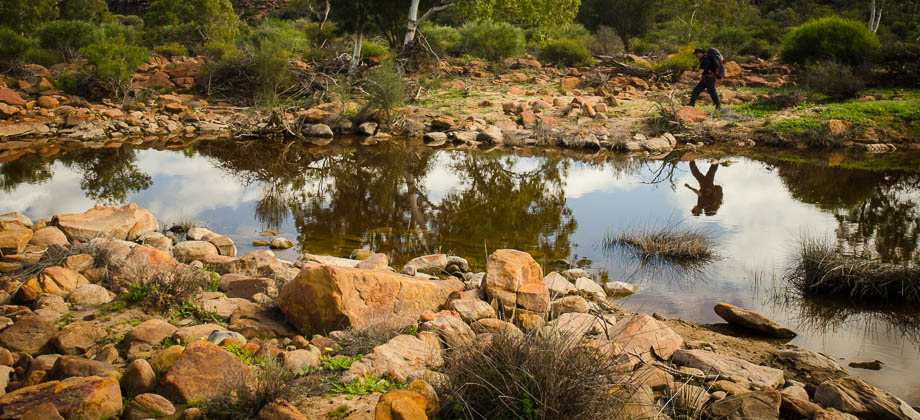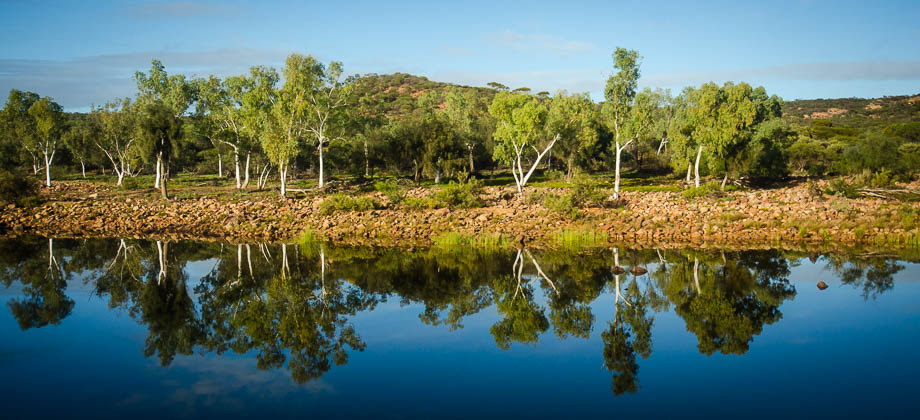Murchison River Gorge - Day 4
Murchison River Gorge Index
Little Z-Bend
Around four kilometres in, the grass seemed a lot healthier, greener somehow. As I rounded a large boulder, I saw the trickle of a small waterfall above rocks that were stained with black algae, and felt the air laden with moisture. Small, Drosera hirsuta sundews lined the bottom of those black rocks, appearing almost dainty-like, but harbouring a malicious intent: these tiny, carnivorous herbs use sticky fluid on their tentacles to capture small insects, before the enzymes in the fluid partially dissolve the body to provide them with nutrients.

 We came upon a peculiar dead tree [note: the foliage in the image belongs to the trees behind] approximately 500 metres from the waterfall. The tree sprouted out of a round depression that was filled with murky, algae-filled water. I was fascinated by the whole scene - wondering what had happened to the tree, and how a depression like that had come about.
The gorge opened up with vast expanses of boulders at the 5.5 km mark. The river broadened out and the water became a lot calmer; the huge overhangs on the west bank, and the imposing cliffs that surrounded the area made everything seem majestic. This was it - the Little Z-Bend.
We came upon a peculiar dead tree [note: the foliage in the image belongs to the trees behind] approximately 500 metres from the waterfall. The tree sprouted out of a round depression that was filled with murky, algae-filled water. I was fascinated by the whole scene - wondering what had happened to the tree, and how a depression like that had come about.
The gorge opened up with vast expanses of boulders at the 5.5 km mark. The river broadened out and the water became a lot calmer; the huge overhangs on the west bank, and the imposing cliffs that surrounded the area made everything seem majestic. This was it - the Little Z-Bend.
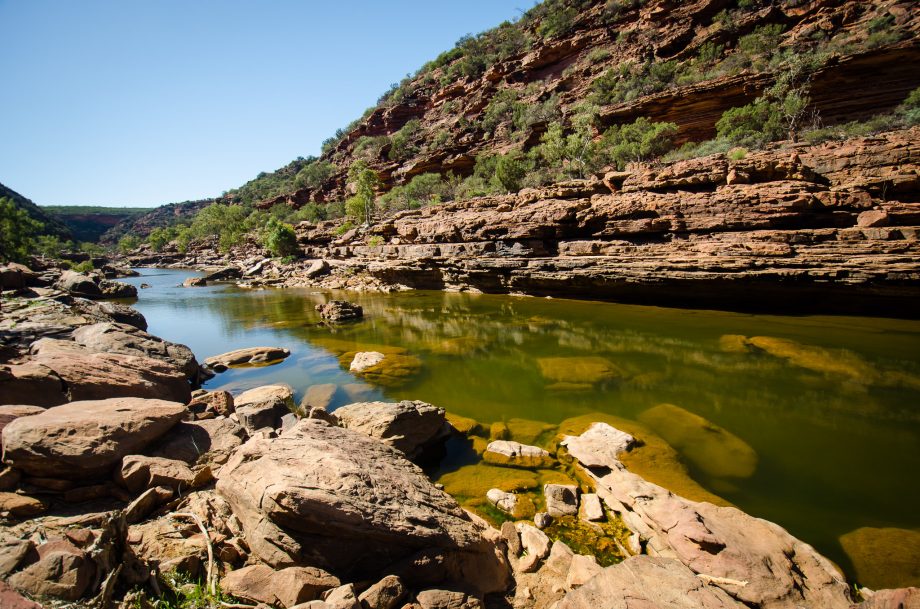 The gorge seemed to fluctuate over time. The walls would close in on us, often to the point where traversing was required, and cause everything to go deathly silent; the gorge would then open up, and the familiar sounds of trickling water and twittering birds would return. The cliffs however, would always soar up and around us, and the contrast always remained - the green, frilly algae in the terraces underwater and the azure skies, with the deep red and orange sandstone.
Looking closer, one would be able to see all sorts of stories written in the rocks - from fossilised tidal patters and curlicue patterns made by tiny clam shells, to unexplained shapes such as the huge almost perfect semi-circle. There were also the ubiquitous spiders of course, and they came in all sorts of shapes and sizes.
The gorge seemed to fluctuate over time. The walls would close in on us, often to the point where traversing was required, and cause everything to go deathly silent; the gorge would then open up, and the familiar sounds of trickling water and twittering birds would return. The cliffs however, would always soar up and around us, and the contrast always remained - the green, frilly algae in the terraces underwater and the azure skies, with the deep red and orange sandstone.
Looking closer, one would be able to see all sorts of stories written in the rocks - from fossilised tidal patters and curlicue patterns made by tiny clam shells, to unexplained shapes such as the huge almost perfect semi-circle. There were also the ubiquitous spiders of course, and they came in all sorts of shapes and sizes.
Ubiquitous Spiders
The largest spider that I saw was a huge female Australian golden orb weaver spider (Nephila edulis) - the name referring to the golden colour of the strong silk that it weaves, so strong in fact that it can ensnare small bats and birds. This species is one of the largest spiders that can be found in Australia, and this specimen had a torso that was easily 5cm across and had a swollen abdomen, one that was most likely filled with eggs. This species shows pronounced sexual dimorphism - the phenotypic difference between males and females of the same species, such as body size, morphology, and ornamentation - with the large females staying upside down in the center of the web and the much smaller males on the outskirts. The female has also been known to kill and eat the male after mating, and considering that the Nephila spiders are also considered a delicacy in New Guinea, this genus must be tasty indeed!

